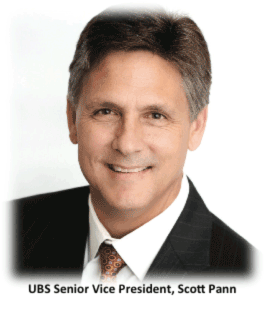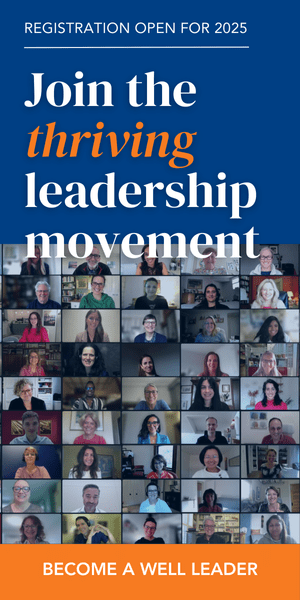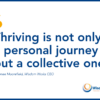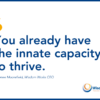Executive burnout. It’s everywhere. In fact, the Wall Street Journal reports that a recent Harvard Medical School study finds an astounding 96% of senior leaders feel burn out to some degree, and one-third label it extreme. According to Dr. John Davis, a management professor with the study, leaders often lack “good thermostats” for detecting the signs of impending burnout – irritability and resentment, faked optimism, a lack of passion, plus a host of body cues from high blood pressure to sleep challenges to relentless fatigue. The problem gets worse as most leaders feel they can’t step off the hamster wheel of work long enough to remedy their predicament.
In my quest to find inspiring examples of wellbeing leadership in action, I’ve seen plenty of leaders who derail major decisions in their businesses and careers because they can no longer bring their best energies to work. And without their best at their disposal, their lackluster leadership style fails to inspire their employees or investors.
 But not Scott Pann. The Senior Vice President of financial institution UBS is known to show up for just about everything – work-related or otherwise – mentally focused, physically energized and emotionally ready.
But not Scott Pann. The Senior Vice President of financial institution UBS is known to show up for just about everything – work-related or otherwise – mentally focused, physically energized and emotionally ready.
In this installment of Wisdom Works’ The Face of Wellbeing Leadership, Scott reveals how he keeps his personal energy so consistently high. Family, fun, faith — these are all tools in his wellbeing arsenal. But his secret fuel is eating and exercising strategically, and he uses these to deliver a high level of vitality to his work, his organization and his non-work responsibilities and passions, such as family and church.
A day in the life of this Wellbeing Leader looks like this:
0500 Wake up. Eat a banana to stave off morning hunger. Drink fluids. Prepare to exercise.
0530 Work out for one hour because being “physically active helps me to stay mentally strong throughout the day”.
0630 Eat a healthy breakfast.
0830 Start the workday, frequently “standing at my desk rather than sitting.”
0930 Pace back and forth in the office while on the phone with a client. The pacing “gives me a little bit of energy” while concentrating on the call.
1000 Do the first walkabout of the day for at least a mile. Walking “helps me break up my day, disengage from the tasks at hand, and allow my brain to go over to the creative side so that I stay mentally refreshed.”
Have a light snack, often a handful of almonds or an energy bar.
1200 Enjoy a nice lunch, possibly walking to a restaurant to meet with a colleague.
1500 Walk with employees to the nearby yogurt shop, Buttercup (fondly named “Meeting Room B”) for a team meeting.
Have another light snack.
1800 Head home to family still energized, rather than exhausted. Or, eat a healthy dinner, followed by a two-hour session of Krav Maga, a strenuous martial art that “stretches my mind as much as my body.”
2100 Spend time connecting with family.
2200 Get a good night’s sleep!
Wellbeing Leaders strive to use their organizations and industries to empower and engage employees, consumers and communities worldwide toward greater vitality and balanced growth. But they can’t do so without role-modeling wellbeing behaviors in how they live, work and lead. As Scott said in our recent conversation on the topic, “What message am I sending to those people that I care about, both inside my work and outside, if I’m not a good example myself?” When it comes to wellbeing leadership, that’s a good question for us all.
Read More:






